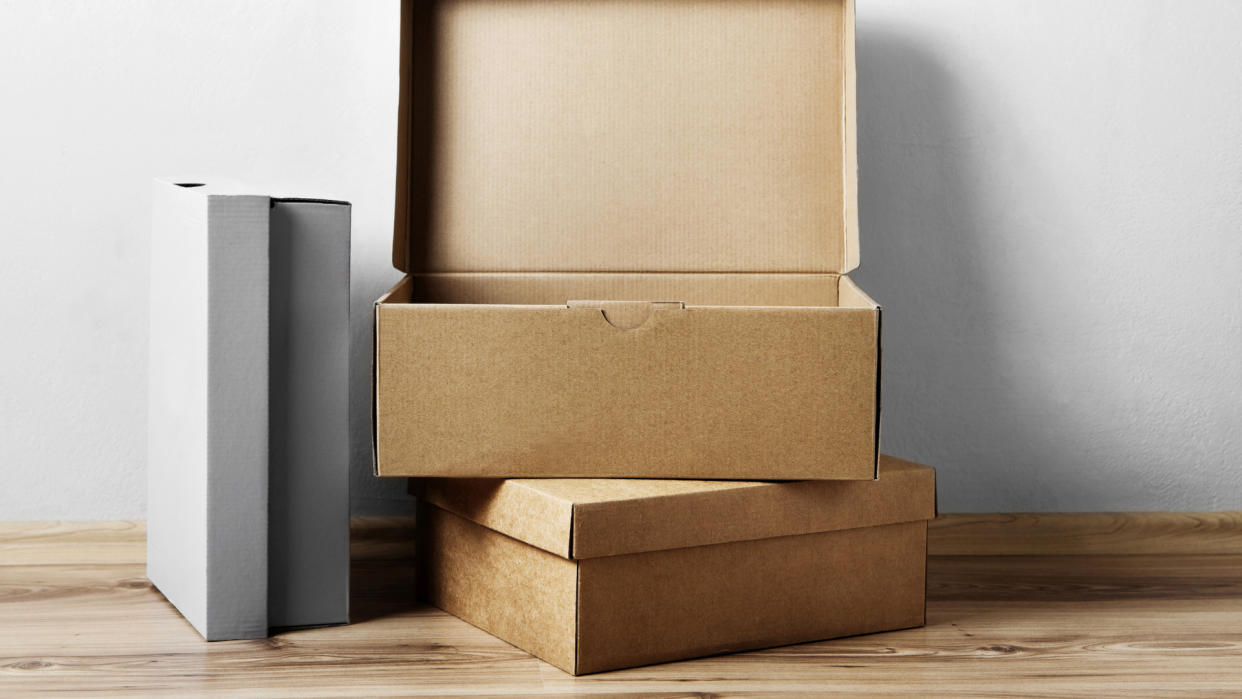How Rising Cardboard Prices Could Indicate a Better Economic Outlook for 2024

When I met a girlfriend’s brother for the first time, he prompted me to ask him what he did for a living. I obliged, and he responded, “I make trash.” In reality, he manufactured cardboard packaging — the kind that most retail products are shipped in. Plus, he frequently complained about the inconsistency of the work, how his company often furloughed workers for weeks or even months at a time.
Find Out: Toilet Paper to Discontinued Items: 7 Ways Shrinkflation Has Come to Costco
Explore: How To Get $340 Per Year in Cash Back on Gas and Other Things You Already Buy
Why? Because the American consumer is a fickle beast.
Leading Indicator of Retail Sales
Consumers drive the U.S. economy. In fact, consumer spending makes up 68% of U.S. gross domestic product (GDP), according to the U.S. Bureau of Economic Analysis.
So when American consumers buy more things, it powers broad economic growth. And all those things need to be shipped, whether in small boxes to individual consumers or larger ones to physical stores.
Yet GDP is a lagging indicator, viewable only in hindsight. It helps us look back at trends over time, but it doesn’t tell us much about the future.
So, many analysts look for leading indicators of economic change: bellwethers that point to the speed and direction of growth.
Retailers buy cardboard boxes in advance, based on anticipated sales. That in turn impacts cardboard pricing and cardboard production, which make it one such leading indicator of anticipated consumer demand.
Changes in Production and Price
In an era of sticky inflation, higher prices rarely make anyone happy. But growing cardboard prices could indicate strong consumer demand over the next 12 months.
Wholesale cardboard prices jumped in the pandemic, just as economists would expect given the huge demand for physical goods at the time. In mid-2022, producer prices flattened out, and in early 2023 they started free-falling, according to the US Bureau of Labor Statistics. Again, it made sense: Americans were spending more on services and experiences, and less on physical products.
In August 2023, prices stabilized again — and have held steady since. That could indicate that the Federal Reserve’s soft landing may yet come to pass.
Likewise, cardboard production slumped from March 2022 to April 2023. But it has since started recovering, indicating higher future demand.
Clear Skies Ahead?
While these indicators offer optimism about continued consumer demand, don’t read too much into the tea leaves.
They only represent a glimpse into one aspect of the U.S. economy: physical goods. Their surging demand in late 2020, for example, wouldn’t have made you feel any better if you were a struggling restauranteur forced to close your doors.
Even within the realm of physical retail goods, they only serve as one of many potential indicators. Others include metal production, household waste production, and freight tonnage. Leading indicators for services sometimes include entertainment spending and urban area public transportation usage.
And that says nothing about the bogeyman of inflation. If consumers keep spending gobs of money on goods, that may drive inflation higher and prompt the Federal Reserve to pump the brakes with more rate hikes.
More From GOBankingRates
Suze Orman: 5 Social Security Facts Every Soon-To-Be Retiree Must Know
Here's How to Add $200 to Your Wallet -- Just For Banking Like You Normally Would
The Biggest Mistake People Make With Their Tax Refund -- And How to Avoid It
This article originally appeared on GOBankingRates.com: How Rising Cardboard Prices Could Indicate a Better Economic Outlook for 2024
